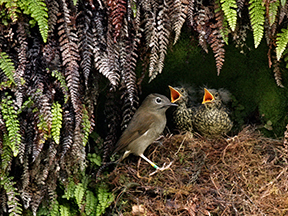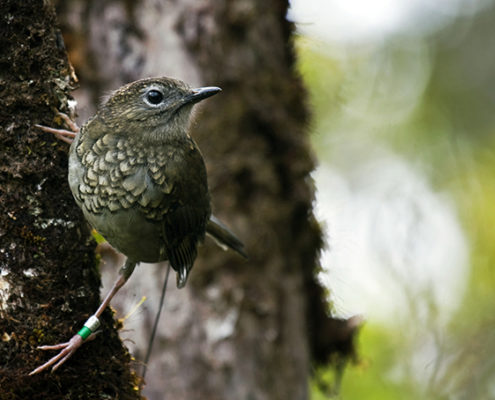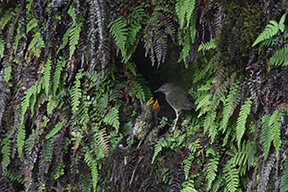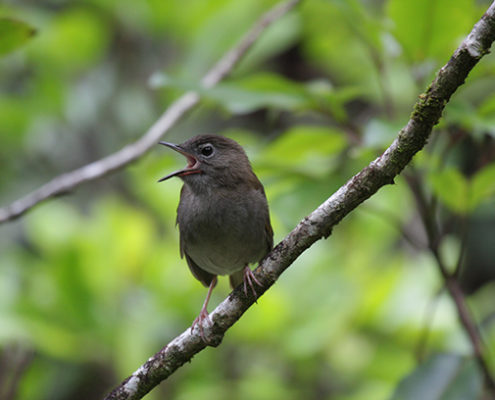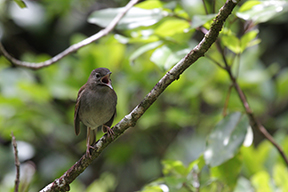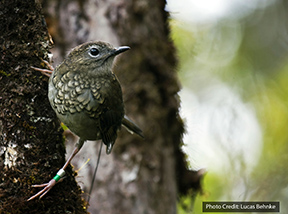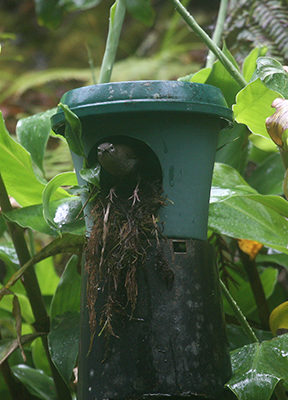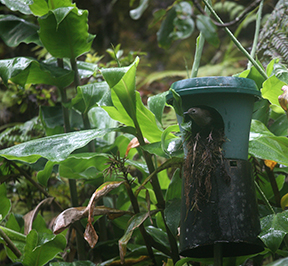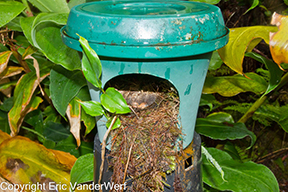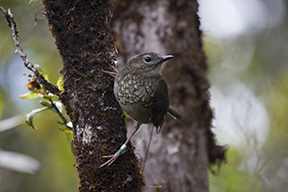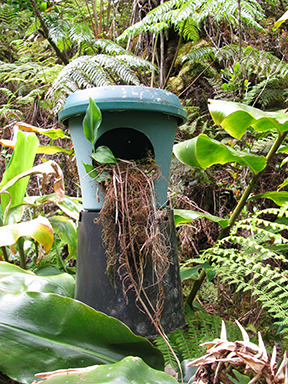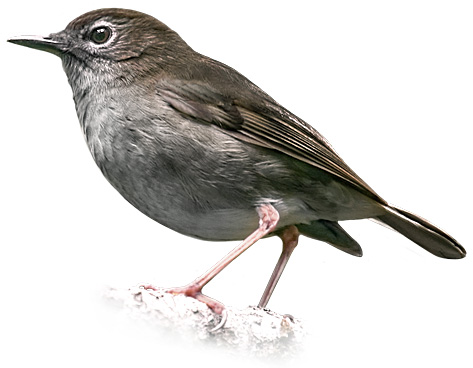
Puaiohi
Myadestes palmeri
The secretive puaiohi, also known as the Small Kaua’i Thrush, is one of only two endemic species in the Thrush family that still exist in Hawai’i today. First recognized in 1891, the puaiohi is found only on Kaua’i and it is not known to have historically inhabited other islands in the archipelago. This highly endangered species (population ~494 individuals) is set apart from other native forest birds on Kaua’i by its large size, melodious song, and peculiar nesting and foraging biology.
Once inhabiting forests down to sea level, the puaiohi has now retreated to a 20km² area of the Alaka’i Plateau. Puaiohi occupy small territories along deeply-incised, narrow, forested streambeds above approximately 1050 meters in elevation. These territories are used for breeding and for foraging. Stream habitat is crucial to the species, which primarily nests in shallow crevices on steep cliff walls along streams.
Puaiohi typically breed between March and August. This species often will re-nest when a nest fails and can fledge multiple broods in a season. Two eggs are typically laid in each nest, and are incubated by the female. Juvenile birds can be distinguished from adults, which are grey with a white eye ring, by speckling on the breast and abdomen, sometimes referred to as scalloping. Often scalloped plumage persists into the bird’s second year.
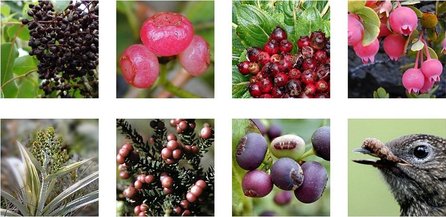 Primarily frugivorous (or fruit-eating), puaiohi consume the fruits of native plants species such as ‘ōlapa, lapalapa, ‘ōhi’a hā, kanawao, ōhelo, pa’iniu, pūkiawe, kāwa’u and pilo, and some introduced plants such as thimbleberry. They also eat a variety of invertebrates, especially during the breeding season.
Primarily frugivorous (or fruit-eating), puaiohi consume the fruits of native plants species such as ‘ōlapa, lapalapa, ‘ōhi’a hā, kanawao, ōhelo, pa’iniu, pūkiawe, kāwa’u and pilo, and some introduced plants such as thimbleberry. They also eat a variety of invertebrates, especially during the breeding season.
Our work on puaiohi focuses on determining their population size and status, and in assessing the influence of food availability, habitat structure and composition, predation, and introduced disease on survival and reproductive success (and ultimately abundance). We also partner with the Zoological Society of San Diego to monitor the fate of captive-bred birds that are released into the wild. These efforts are detailed in the draft Five-year Recovery Plan for puaiohi (2010-2015) and Hawai’i’s Comprehensive Wildlife Conservation Strategy Puaiohi Fact Sheet. A paper published in 2014 suggests that the survival of female, juvenile and captive bred birds is very low, due to nest predation by invasive rats. However, unlike the honeycreepers, chronic malaria infection does not impact their survival, as survival rates of infected and uninfected puaiohi are similar. (Fantle et al. 2018).

